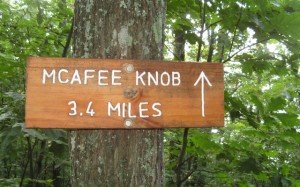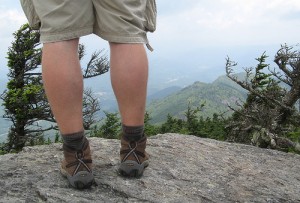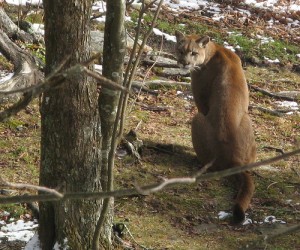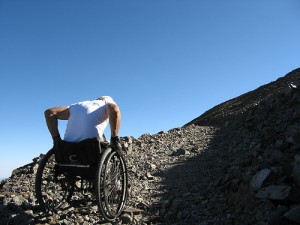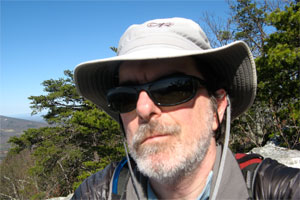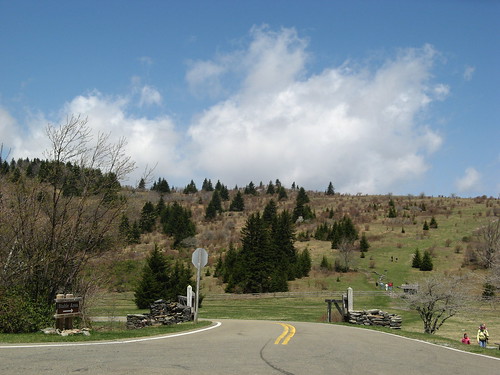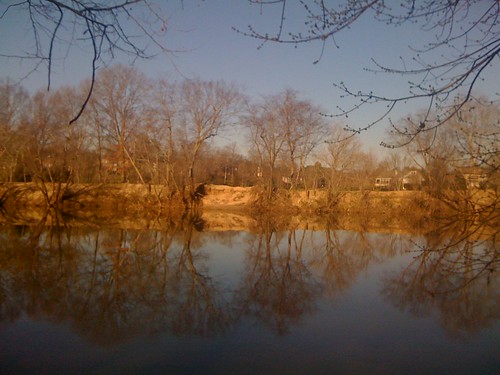Every November, the organizers of the Tanglewood Festival of Lights allow a walk-through so folks can take their time and immerse themselves in the riot of holiday lighting. That happened last night; tonight the festival begins in earnest with carloads of people inching their way through the park.
Few will ever leave their cars, which is a shame because putting a two-ton vehicle between yourself and all this is a crime against the senses. It was a bit misty and far too warm to qualify as wintry weather on Friday night, but the ability to feel the breezes, move at whatever pace feels comfy, pause to take pictures and hear the kids erupting in peals of joy was priceless.
In comparison, driving through the festival in a car feels more like standing in line at Disneyland. While you get the thrills eventually, the crowds and the waiting ruin the magic.
I’m guessing no more than a few hundred people showed up last night, but those of us who made it were in for a treat. Note that I have no claims to moral superiority for walking through this year; I’ve had the same opportunity for the past three years and never managed to dislodge my fanny from my favorite chair in front of the TV.
Here’s a quick summary of last night’s walk-through, posted in the order I took the photos.
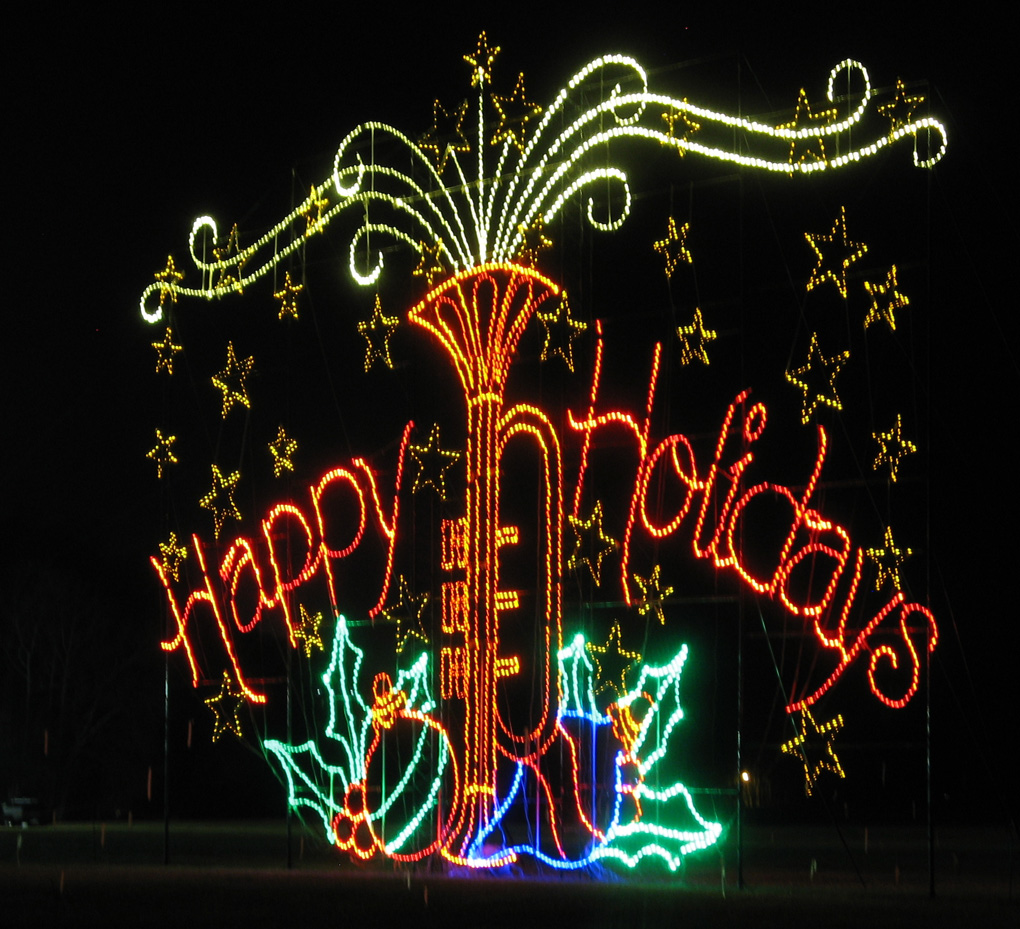
From a shutterbug’s perspective, the best thing about the walk-through is the ability to get close to the displays; there’s not much chance of that in a car. When you’re up close, there’s enough light for the camera to get at least a decent handheld shot at a one-eighth-second exposure. The camera’s image-stabilization technology does the rest.
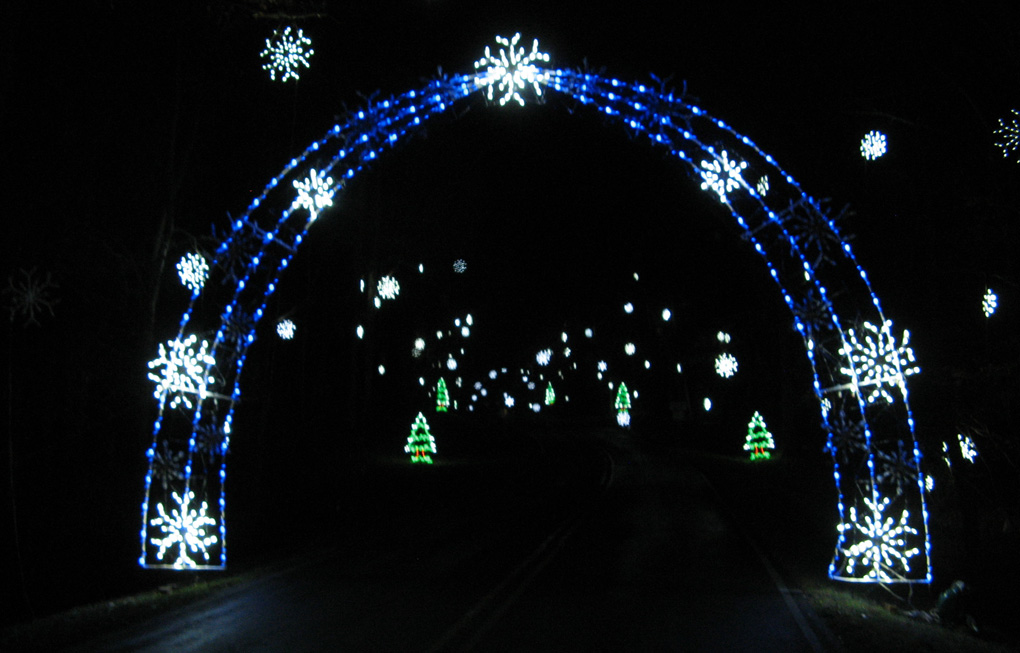
This is the first big feature after you enter the festival. All these snowflakes are flickering, which gives the visual centers of the brain a nice workout.
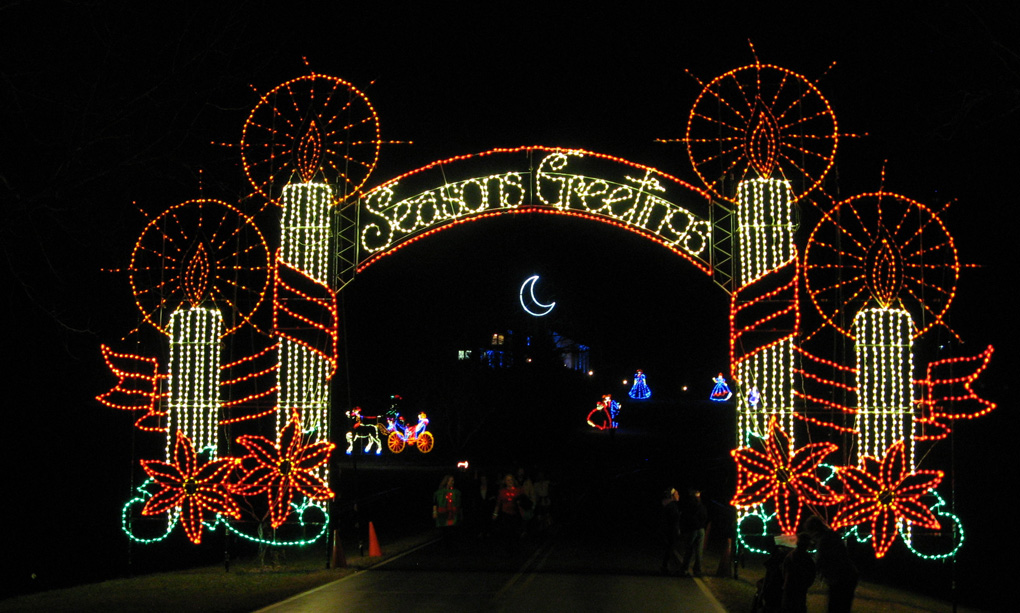
Probably one of the best scenes in the festival. A lot of the festival’s lighting is over-the-top but this one has a subtlety that better reflects the spirit of the season, as we like to say.
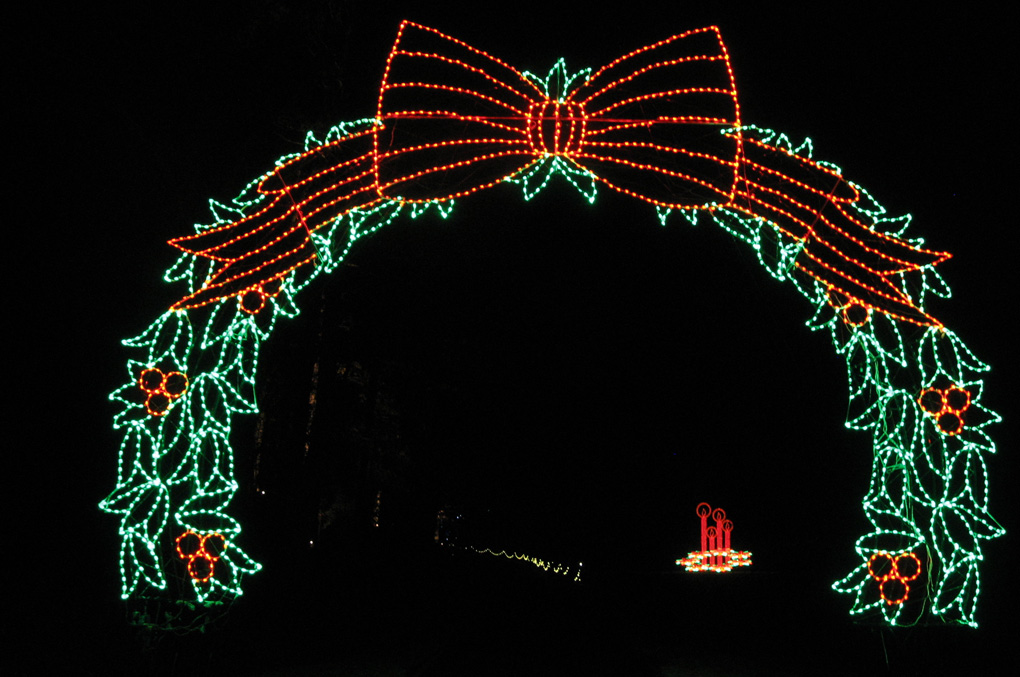
The abundance of arches over the road speaks to the fact that this is designed to be seen through the front windshield of a car.
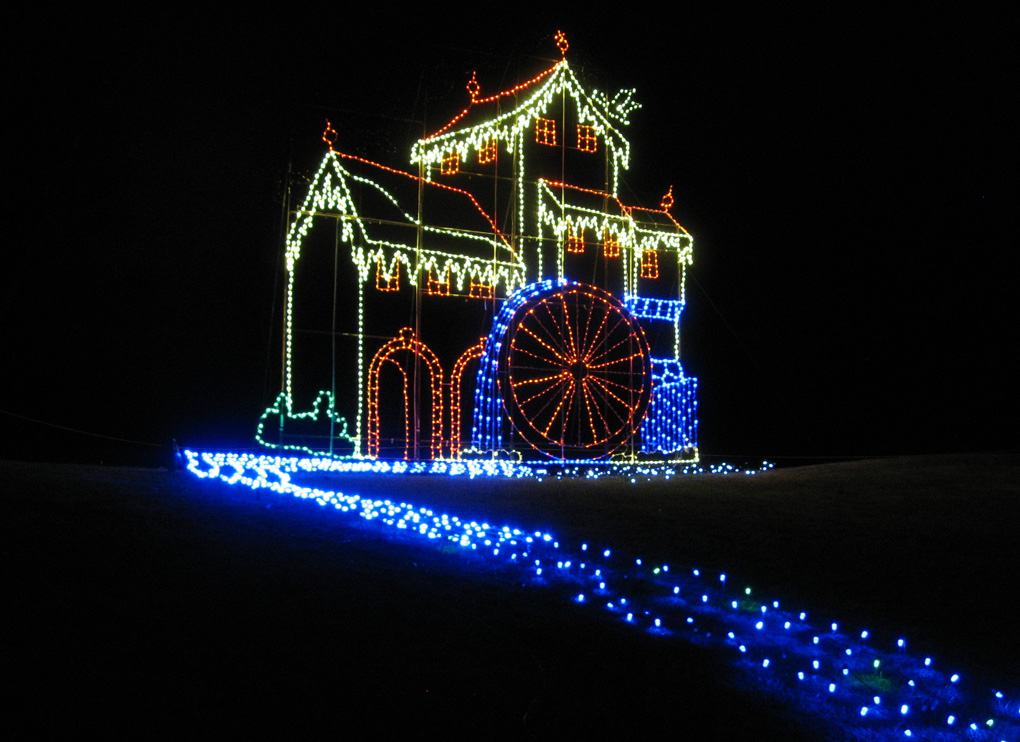
This mill with the stream of blue lights is a nice touch.
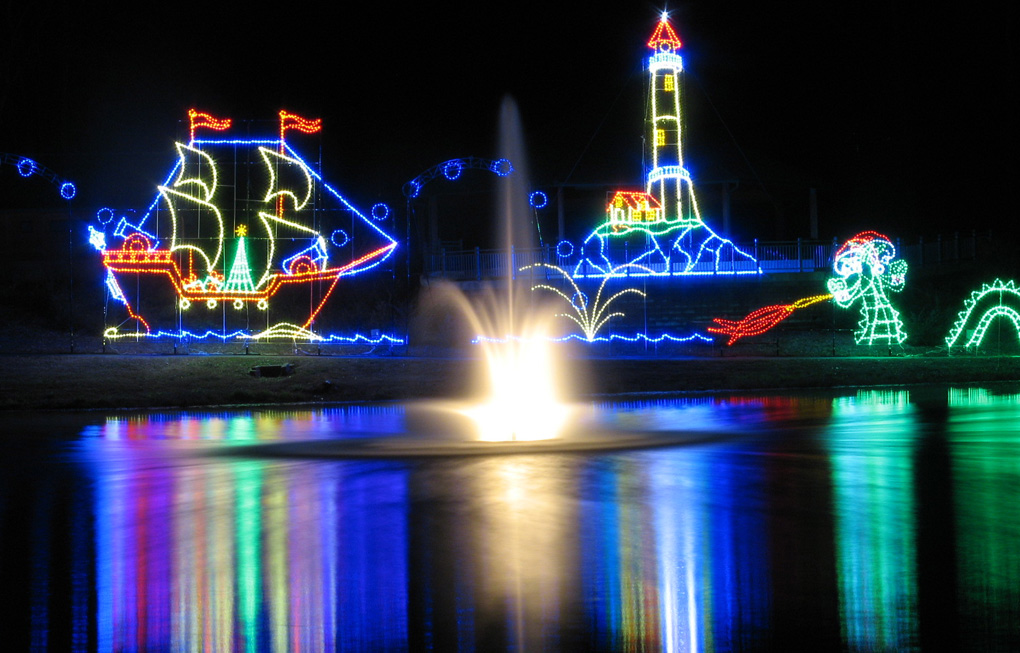
The real showpiece is the display around this pond — though you have to admit there’s not a lot of holiday imagery happening here.
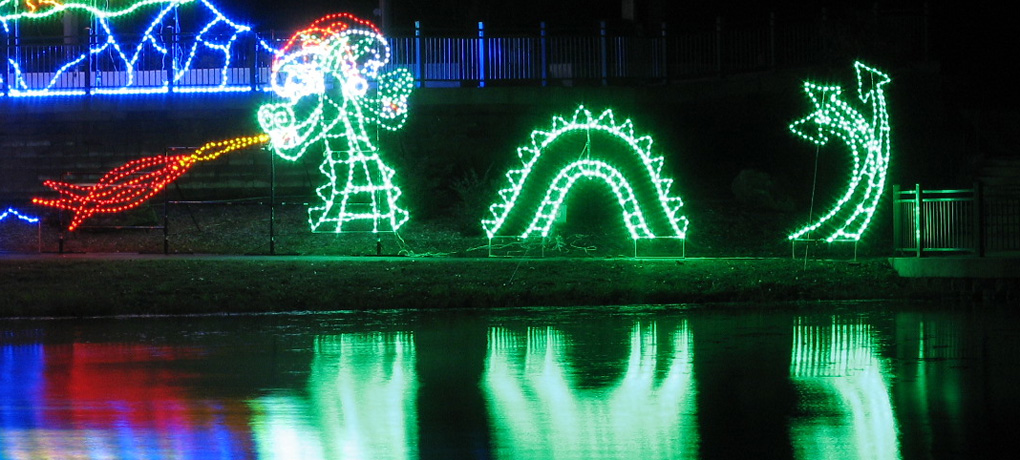
OK, so the sea serpent may represent our collective dread of fighting crowds at the mall.
Why does the serpent seem to have two heads and three tails? In real life, the display flashes in multiple positions to give the impression that the serpent’s head and tail are moving. Actually the brain is what makes us think it’s animated. It doesn’t move at all — so when you leave a camera’s shutter open for 15 seconds as I did here, the sensor captures all the “frames” of the display’s animation and freezes them all in the same shot.
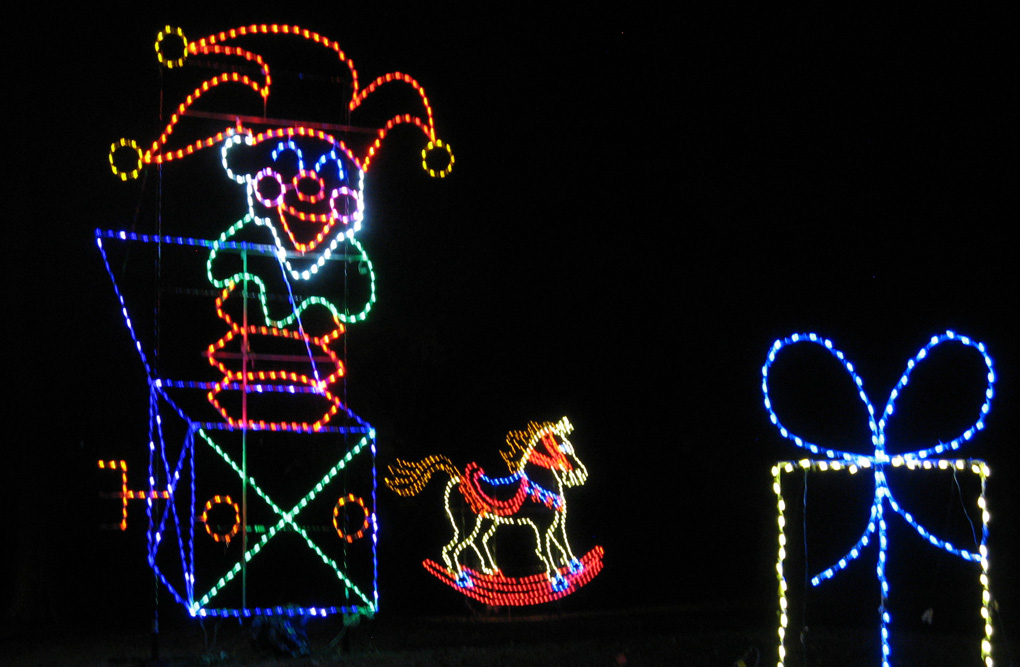
Ever notice how certain clowns, dolls and jack-in-the-box heads seem vaguely diabolical? It struck me as uncanny how this display has the same effect.
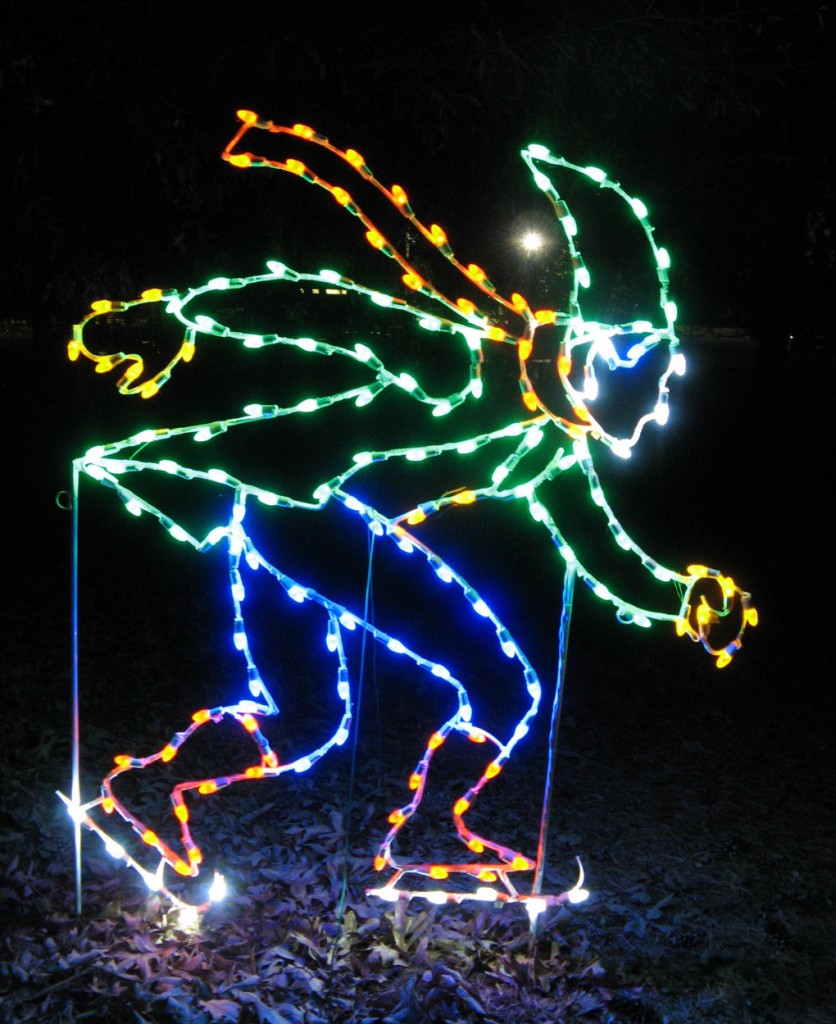
One of the many static displays.
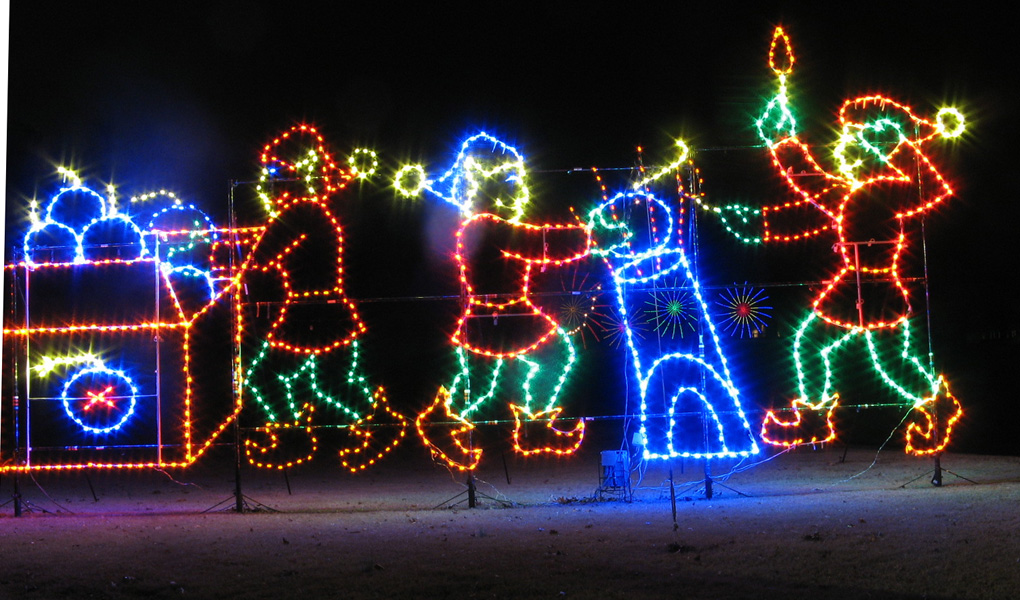
In the animation, the guy on the left is grabbing the time bombs from the box and handing them to the guy in the center, who drops them in the cannon for the guy on the right to light the fuse. The time exposure captures it a single frame.
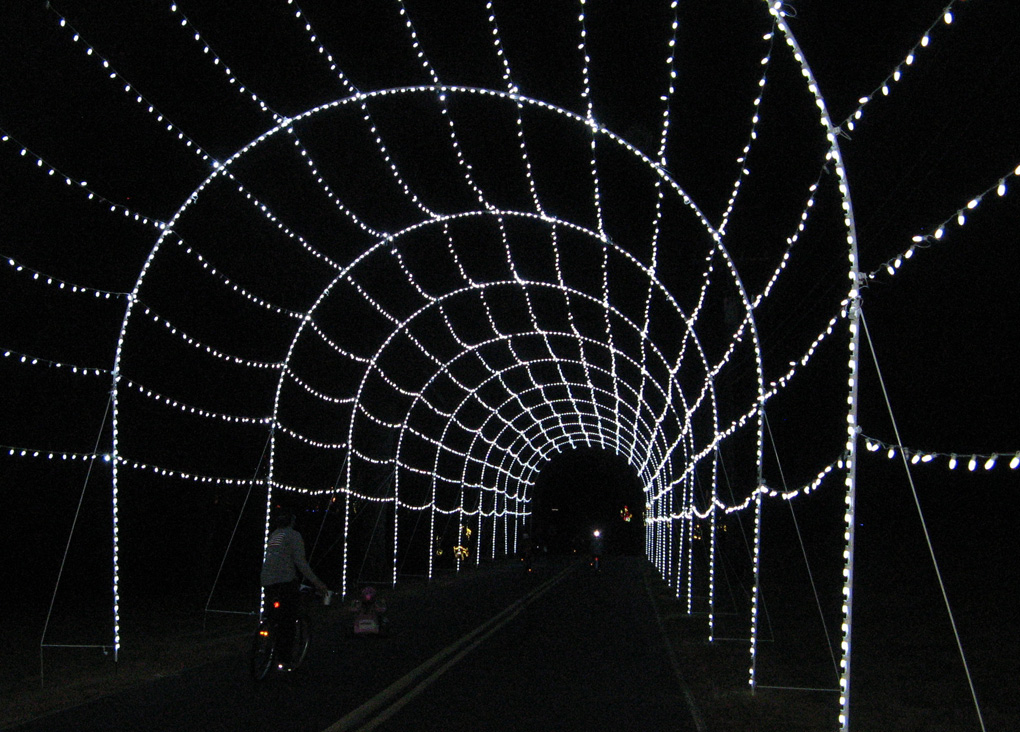
And now we jump to hyperspace! This actually is better experienced in the car because it makes your Chevy feel like a spaceship.
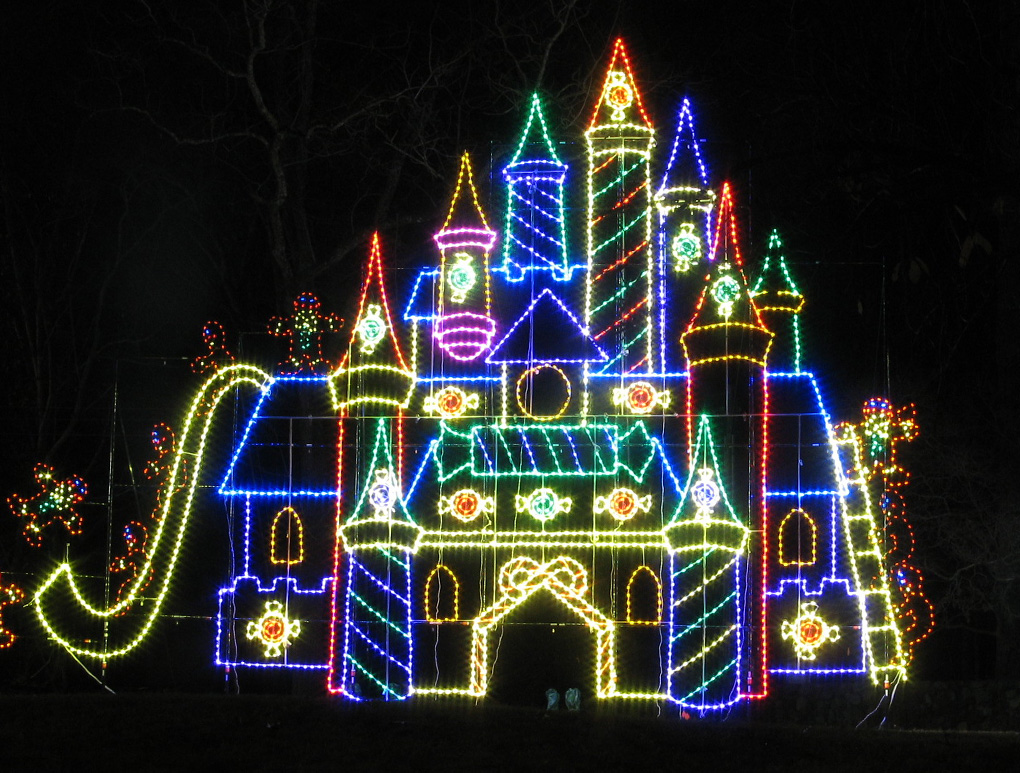
A magic castle.
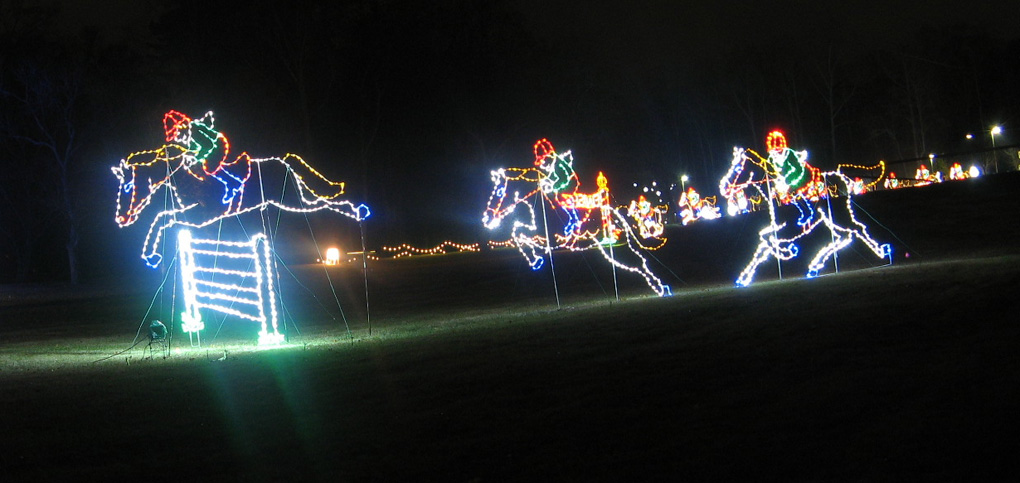
Horses leaping near an equestrian corral where people put their jumping horses through their paces.
More on the 2013 Festival of Lights.
- Official website.
- Schedule: 6 to 11:00 p.m. nightly, Nov. 23-Jan. 1.
- Fees: $20 for cars, trucks and SUVs on Friday-Sunday and all holidays; $15 on Mondays-Thursdays. See the website for rates on buses and commercial vans.

